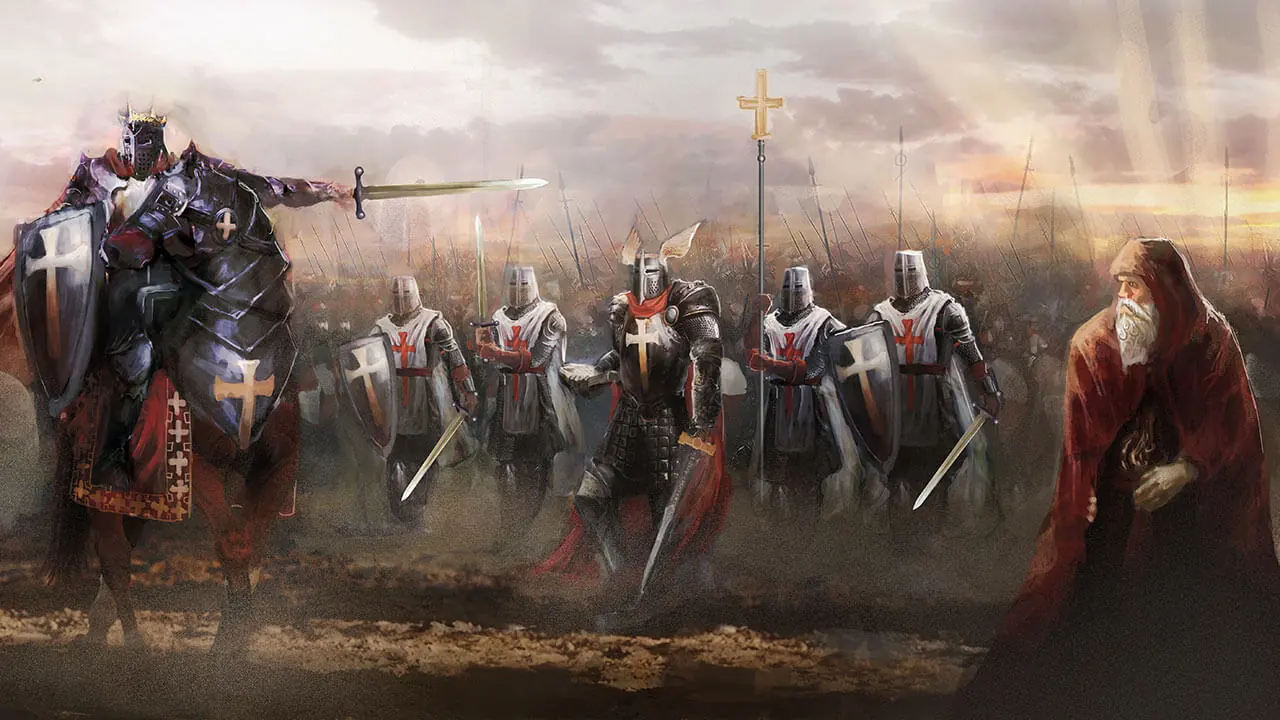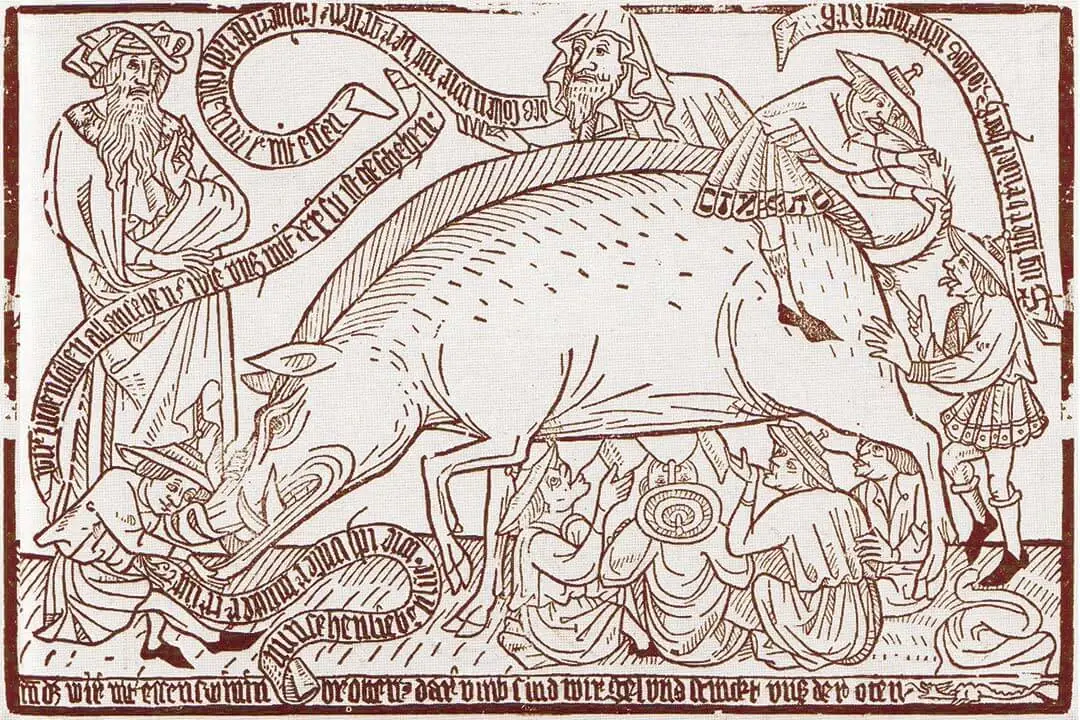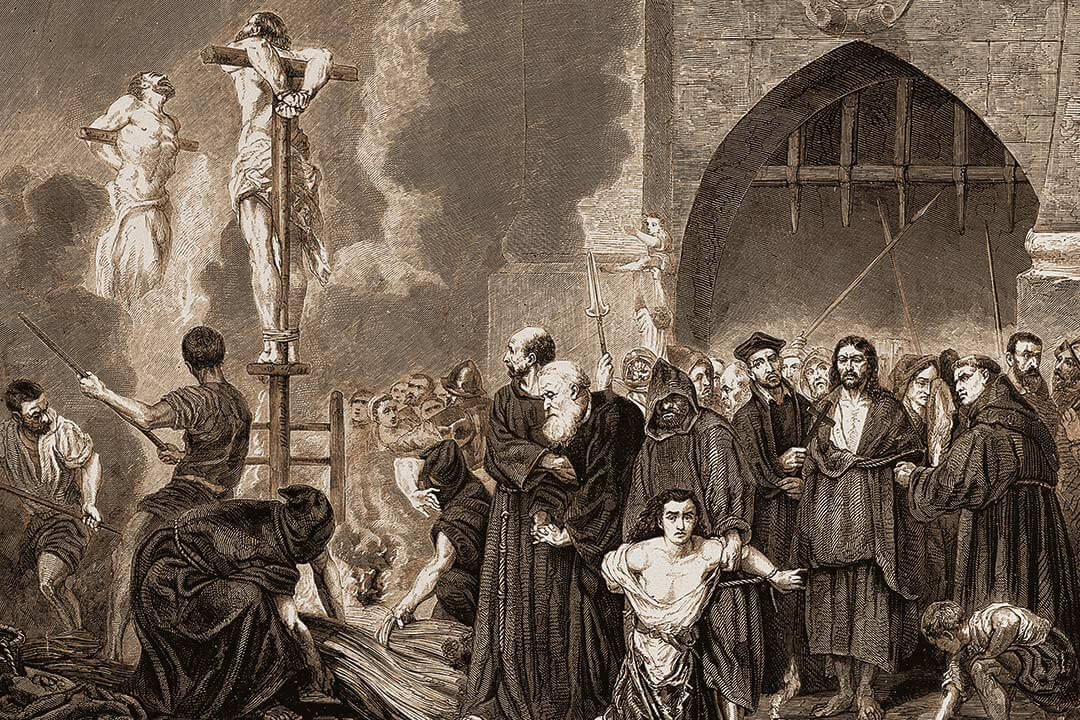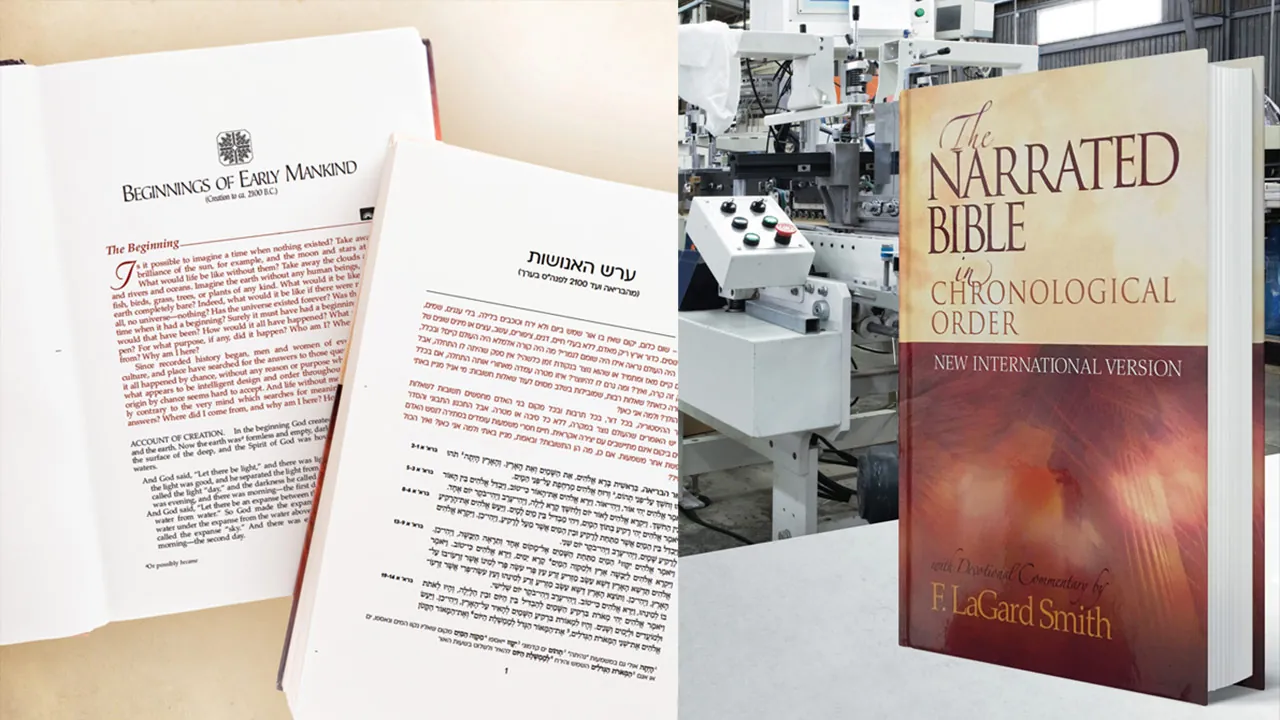
Featured Image Credit: Shutterstock
Last year a Christian ministry posted a video on Facebook showing a preacher walking down a main street in Jerusalem declaring the Gospel. The street happened to border what is arguably the most religious Orthodox Jewish community in the world. He used a Bluetooth mic with a speaker hanging from his belt and a cameraman following behind to capture “the action.”
“Furious Jews threatened to stone us for preaching the Gospel,” and, “angry men, teenagers and even the IDF tried to stop them but essentially had no legal leverage,” the text above the video post read. I’ll set aside the obvious—that any loud person walking down a pedestrian street is going to get on peoples’ nerves even if he’s selling ice cream. But this man wasn’t selling anything sweet. He was selling Christianity.
Had this preacher taken time to study what Jews have endured from Christianity for nearly 2000 years, he would have more appropriately come humbly, begging for forgiveness from the Jewish people rather than declaring that Jews need to convert—or else.
Today when Jews explain why they don’t believe in Yeshua—the list begins, but doesn’t end with the Holocaust, the Crusaders and the Inquisition. For a Jew, discussing belief in Yeshua rarely relates to the actual person of Yeshua. It focuses on how Christians who claimed to represent Yeshua have proven to be the most significant existential threat to the survival of the Jewish people.
It is a dark and sad history, but a history that, once realized, can be redeemed in our day!
The Good ‘Ole Days
For a full generation after the crucifixion, Jewish followers of Yeshua crisscrossed the land of Israel, preaching the glorious news that Yeshua, the Jewish Messiah, had come to earth to die for the sins of His people, the children of Israel. Some estimate there were at least 50,000 Jewish believers in Jerusalem, in a city of about half a million people. That is far more than all of the Jewish believers in the land of Israel today. The former Israeli statesman and scholar, Abba Eban, went further, and wrote that he believed around one third of all Jerusalemites were followers of Yeshua.
Soon, a number of Jews, led by Shaul (Apostle Paul) were commissioned by God to take this amazing news to non-Jews. The number of non-Jews who abandoned their pagan lifestyle for the new message began to grow and grow into the hundreds of thousands throughout the Roman Empire.
Then came the year 70AD. Three days before Passover, as Jerusalem filled with masses of Jewish pilgrims who had come for the holiday, Titus surrounded the city with three Roman legions. They besieged the city for four months until the Roman army breached the walls.
Rome ravaged Jerusalem and burned down the Temple. Starving Jews who survived snuck out of the city, hoping to find food. Some of those who were caught were sold as slaves. The rest, some five hundred a day, were crucified. Those who were fortunate enough to escape, fled to areas around the Mediterranean. Those who remained in Judea would be eradicated by the next Roman ruler, Hadrian. By the end of his rule in c. 138 virtually all evidence of Jewish believing communities had vanished.
The New Gospel
Nevertheless, the New Testament seeds sown by the Jewish followers of Yeshua in fertile Gentile soil had taken deep root and began to sprout, despite heavy persecution by the Roman Empire. Though all the books of the New Testament had been written by now, circulation among new Christians was slow and uneven. As the numbers of Christians grew while the number of Jewish believers almost disappeared, the first hints of anti-Semitism became discernable.
As a result, just 50 years after the last Apostle died, Justin Martyr (who was martyred by the Romans) allowed a hateful, unloving, and even jealous spirit to enter his life. He asserted that the Jews were a blind and stubborn people, clinging to a now defunct faith.
Justin’s dual influence as a Christian hero and inciter against Jews affected the mainstream of Christian thought by planting the sinister seed of Christian anti-Semitism. It would grow into a monstrous, inseparable axiom of the Roman Catholic church.

Fathers of the Faith
The Church Fathers listed below are revered for the growth and expansion they brought to Christendom. However, despite what good influence they may have had, their expressed hatred toward the Jewish people not only cost countless Jewish lives, but is probably the saddest case of repaying evil for good in recorded history. Many Christians today would be surprised to realize some of the most widely accepted Christian doctrines were birthed during these dark times.
Origen of Alexandria (c. 184-254) was one of the earliest voices to blame the whole nation of Jews for the death of Christ. He also insisted Christians were the “true Israel.” These two declarations soon became precepts in Roman Catholic Church doctrine.
Tertullian (c. 155-240) followed suit and argued that 1. Christians have taken over from the Jews as the people of God, 2. The New Covenant replaces the Old Testament: circumcision, observance of the Sabbath and the temple sacrifices belong to the past, and 3. The Church is now the (sole) heir to the promises of the Old Testament.
Eusebius of Alexander (c. 270-340) saw good reason to want to convert the Jewish people, but simultaneously detested what they represented as the people who rejected the Messiah. He once gave a sermon beginning every paragraph: “Woe to you, stiff-necked and uncircumcised, from being the Elect of God you became wolves, and sharpened your teeth upon the Lamb of God. Hell…shall imprison you with your father the devil.” With an invite like that, it’s no wonder he drew no interest from Jews.
Emperor Constantine who ruled from c. 306-337, became a Christian, absorbing the growing hatred toward Jews from his advisor, Eusebius. His position of power allowed him to act on the animosity the Church Fathers had for the Jews. He forbade mixed marriages, decreed a separation between Easter and the “dirty” Jewish Passover. Conversion of a Jew to Christianity was always encouraged, though the conversion of a Christian to Judaism was punishable by death.
By the end of the 4th Century, hatred of the Jewish people was in full bloom.
John Chrysostom, (c. 347-407) the renown theologian preached, “Eight Sermons against the Jews” in which he asserted, after a long list of crude insults, that for the Jews there is “no expiation possible, no indulgence, no pardon.” He declared that, in accordance with the sentiments of the saints, he hated both the synagogue and the Jews, as demons dwelled in both.
Chrysostom’s sermons were written down verbatim by his audience and subsequently circulated throughout the Christian world. These sermons are considered to be the turning point in the history of Christian anti-Judaism.
During World War II, the Nazi Party in Germany used Chrysostom’s work in an attempt to legitimize the Holocaust in the eyes of German and Austrian Christians.
Martin Luther (c. 1483-1546), one of the most influential Christian leaders in history, was the founder of the first Protestant movement. In his early life, he wanted to convert Jews to Lutheranism (Protestant Christianity). His early writings express empathy towards Jews who had been badgered and forced to become Christians by Catholic authorities:
“If I had been a Jew and had seen such dolts and blockheads govern and teach the Christian faith, I would sooner have become a hog than a Christian. They have dealt with the Jews as if they were dogs rather than human beings; they have done little else than deride them and seize their property.”
Yet in his later years, Luther himself would tire of the Jews’ continued rejection, and wrote that Jews were “full of the devil’s feces … which they wallow in like swine.”
He argued that Jewish synagogues and schools should be set on fire, their prayer books destroyed, rabbis forbidden to preach, homes burned, and property and money confiscated. “These poisonous envenomed worms should be drafted into forced labor or expelled for all time.” And concluded, “We are at fault in not slaying them.”
In his book The Rise and Fall of the Third Reich, William L. Shirer wrote:
It is difficult to understand the behavior of most German Protestants in the first Nazi years unless one is aware of two things: their history and the influence of Martin Luther. The great founder of Protestantism was both a passionate anti-Semite and a ferocious believer in absolute obedience to political authority. He wanted Germany rid of the Jews. Luther’s advice was literally followed four centuries later by Hitler, Goering and Himmler.
England – The Crusades
The end of the 11th century saw the rise of the Crusaders—essentially the militant wing of the Church. They were on a mission to conquer the Muslim-occupied land of Israel for Christianity. But on the long road to the Holy Land, Crusaders found it in the public interest to round up and lock Jewish families in their synagogues, burning them alive. Some accounts record the Crusaders marching around the burning synagogues singing worship hymns.
At times, burning Jews and their possessions was sometimes seen as a waste. So the Crusaders would sell captured Jews as slaves and take their possessions. Some Jews were converted by force to Christianity. Many chose to die rather than join the idol-worshiping Church. Still others who were selectively left alive committed suicide fearing the horrors awaiting them.
The attacks found public support as false stories of Jewish depravity were spread. The murder of a 12-year-old English boy in 1144 generated a new kind of rumor. While Jews were a fantastic scapegoat for any bad situation, the story behind the murder would mutate until Jews would be blamed all over Europe for their annual ritual of murdering Christian children and using their blood to make Matzoh for the Passover. The accusation was especially offensive as Jews have strict laws against consuming any blood—let alone human sacrifice. But the masses believed it and now Jews were not only evil, they were a threat to Christian families. To this day, many in the Muslim world believe this fabrication known as Blood Libel.
In the year 1290, in the middle of this mayhem, King Edward I of England expelled all Jews from the Kingdom of England. Yes. Every single British Jew was thrown out of the country. Most were only allowed to take what they could carry. For almost 400 years, Britain was void of Jews. The same hatred toward Jews was replicated in France, Germany, and across the entire European continent.

Jews who refused to convert or leave Spain were called heretics and could be burned to death on a stake. – Credit: Wikipedia
Spain – The Inquisition
The Spanish Inquisition is remembered even today for its brutality and thoroughness. Few people know this, but of the hundreds of thousands of Jews living in Spain in the Middle Ages, the majority converted to Christianity as a result of violent persecution, known as pogroms in the late 14th century.
There were few things the hierarchy and the common people agreed upon; the need to convert Jews to Christianity, however, was one of those few things. So, in the summer of 1391, a public mob had gathered outside the Jewish community in Valencia demanding that all Jews convert. A riot broke out. Of the 2500 Jews present, 200 were converted on the spot, the rest were murdered. The city of Seville was next with 4000 Jews murdered. Similar riots continued across Spain.
Jews who converted were known as “conversos,” but those who continued to secretly practice their Jewish faith were called “Marranos” (swine). To make sure these conversos, or “new Christians,” stayed true to their new faith, the Catholic monarchs established the Holy Office of the Inquisition in 1481. Their role included the standard duty of purging the fakers by torture, death or exile. Of course, offenders were always given a last chance to renounce their evil ways and be baptized.
Finally, in 1492, after 100 years of Church leaders struggling with who is really a Catholic and who is not, the new Queen Isabella and King Ferdinand had had enough. Jews and Marranos were to be exposed and expelled. This decree brought with it one final wave of Jews who gave into Catholicism. Those who chose exile would wander for years from region to region in search of a safe place to exist. Some fled to Portugal but were soon expelled. Others escaped across the sea to South America. According to DNA* tests today, Modern Spaniards and Portuguese have an average 20% Jewish ancestry DNA! In Latin America, the figure is even higher: 23%, where many Marranos fled. This gives a scientific window into the massive number of Spanish Jews who were forced to convert and were absorbed into the Christian population.
Russia – The Pogroms
If it’s possible to rate on a scale, the Russian Orthodox Church (which separated from the Roman Catholic Church in the 11th century) was perhaps the most consistently hostile to the Jews who lived among them.
Of course, the first option was always conversion to Orthodox Christianity. Though having rejected that, Jews were rarely allowed to live in or near the rest of the Russian people. This resulted in highly isolated Jewish communities. Despite the segregation and discrimination, Jews excelled in every part of society where they were allowed to participate, including education.
However, while Europe entered the Reformation and Renaissance, Russian rulers bore down on their Jewish citizens. In 1791, Catherine the Great drew a circle around an area in Russia, and ordered all Jews to live only there. Five million Jews who were scattered all over Russia were forced to leave behind everything and move to this area called the Pale of Settlement. Still, the hate festered and mobs of rioters led by Church leaders would invade the Pale and attack the Jewish shtetls (villages), killing, raping and stealing.
During the period 1880-1920 these pogroms were rampant and over two million Jews fled Russia. Some 50,000 of them landed in Israel and became the early pioneers who built the infrastructure for what would become the State of Israel. Ari Sorko-Ram’s mother fled Russia during this time, as well. The boat she was on attempted to dock in Israel but was denied entry. Eventually sailing from France, she ended up in the United States. She wouldn’t live to see it, but the youngest son of her seven children, Ari, would eventually immigrate to Israel. He would fulfill her dream of planting the family roots in their ancestral land, and would become one of the pioneers of the Messianic movement in modern Israel.

Thousands of Evangelical Christians from dozens of countries march through Jerusalem in solidarity with Israel. Israeli security forces smile as a Christian from the UK stops to bless them. – Credit: Dreamstime
In conclusion, it is very important to remember that by no means did all who called themselves Christians despise the Jewish people. In addition, Christians—and Christianity—have come a long way since the Dark Ages. Since the birth of modern Protestant denominations—the ones who have walked out their faith based on the Word of God, not church doctrine—have shown, by far, the most love for the Jewish people. However, if you know what to look for, you can still find an anti-Jew residue in modern church ideology. And entire denominations still exist that exclude and even shun Israel’s place in God’s plan.
Most significantly, however, Israel is still reeling from this history. Wounds of thousands of years don’t heal overnight. If anything can be said about Jews who did not recognize the gift of Yeshua, it is that out of devotion to the God of Israel they rightly rejected the idolatrous and heretical religion that was being forced on them.
While the Lord had always planned to use the Jews to reach the world and the world to, in turn, reach Israel, it is clear the enemy had its own plans. First, in order for God’s plan to succeed, Israel had to exist! Exterminating Israel from the earth would render God’s word void; as such you will find this evil pattern repeat itself throughout history even before the dawn of Christianity. Second, knowing the Church’s calling to provoke Israel to jealousy (Romans 11:14), what better way to render that calling void than to make the mere mention of the Church a stench in the nostrils of Israel?
These facts don’t change the truth that Jews need Yeshua for the same forgiveness of sins as anyone else who desires to be reconciled with the Father. But it does mean this is a history that won’t be overcome with a smile and a handshake.
It will take intentional humility, compassion and patience to rebuild bridges based on love and trust—not with the demand of “conversion” but for sheer gratitude towards the people who brought the knowledge of God to the world. Today, though Israelis still consider Christianity taboo and even dangerous, they do recognize the change in overall attitude and even use the term Evangelical to differentiate between the traditional Church and “born-again Christians” who love Israel.
It’s not a complete healing but it is a good first step towards the plan God had from the beginning.
*The American Journal of Human Genetics

Happy Passover!

What is a Promised Land?

The Scariest Parable in the Bible

Restoration of Our Land

What Makes this Hebrew Bible Different From All Others?

Two Miracles and a Message

Narrating Hope

Hope in Action

Fight to the Finish


